Abstract
Bethanidine has been administered intra-arterially and intravenously into normotensive subjects and its effects on the limb blood vessels, arterial blood pressure, vascular sensitivity to noradrenaline and the degree and time course of sympathetic nerve blockade have been studied. The drug caused an initial constriction of hand and forearm vessels which is attributed to release of catechol amines since it is abolished by the prior administration of phenoxybenzamine. The constriction was followed by a sustained vasodilatation lasting between 5 and 20 hr. Sympathetic blockade of hand vessels commenced immediately on infusion and was complete within 1 hr of administration. Recovery occurred in about 5 hr. Sensitivity to intra-arterial noradrenaline was increased within 10 to 15 min of infusion and before sympathetic blockade was complete. Intravenous administration caused a slight rise in blood pressure of supine subjects. Baroreceptor reflex responses of heart and of limb vessels elicited by tilting the subject feet downwards were abolished by bethanidine and postural hypotension occurred. Bethanidine is a potent sympathetic blocking agent in man with properties intermediate between those of bretylium and guanethidine.
Full text
PDF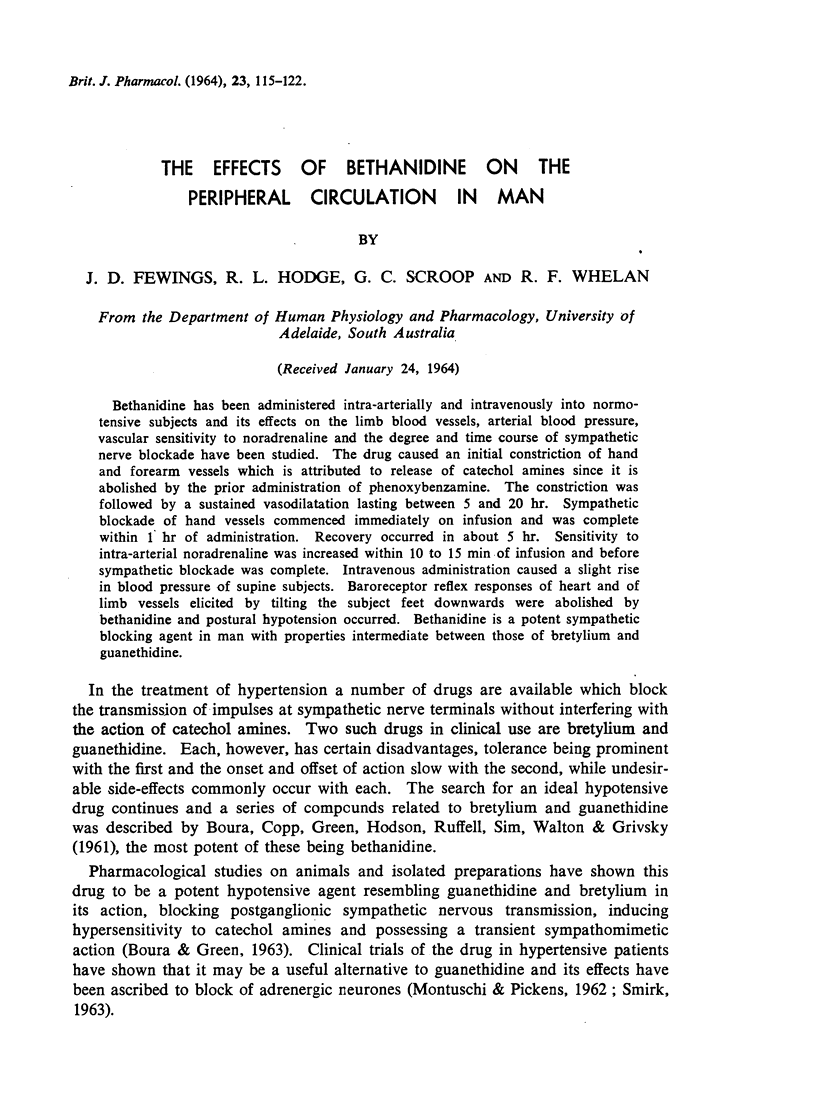
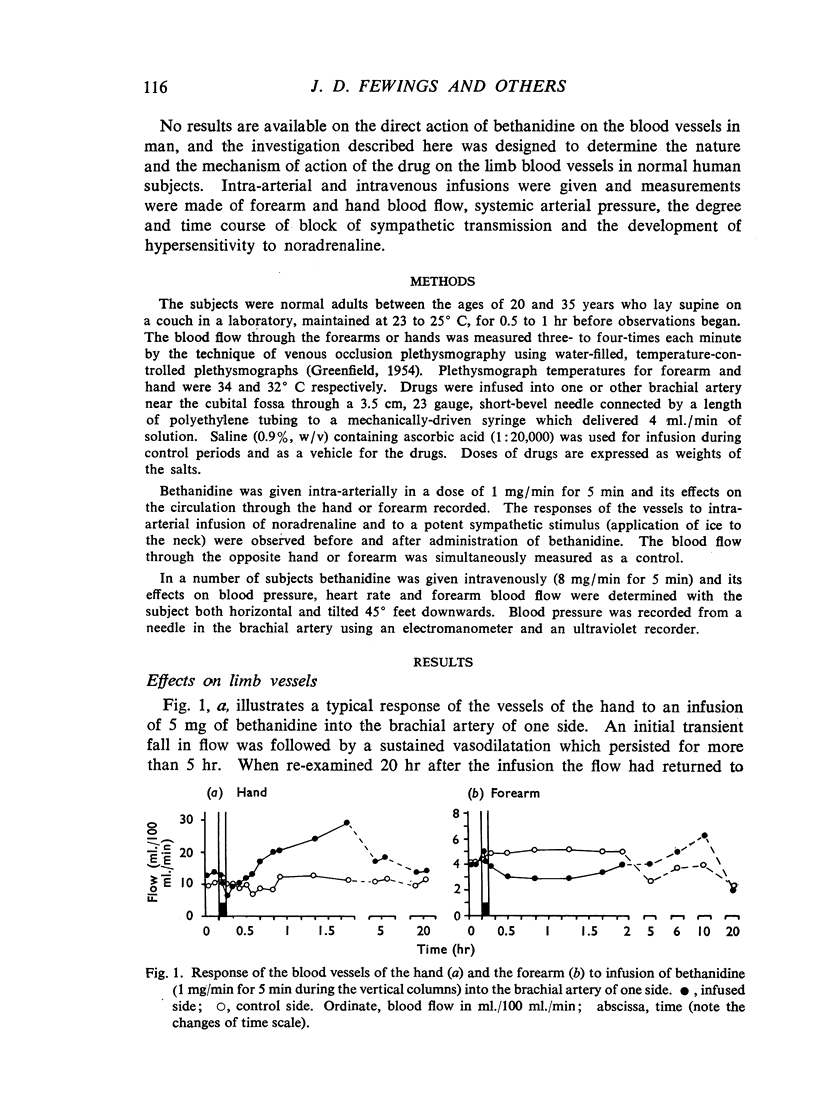

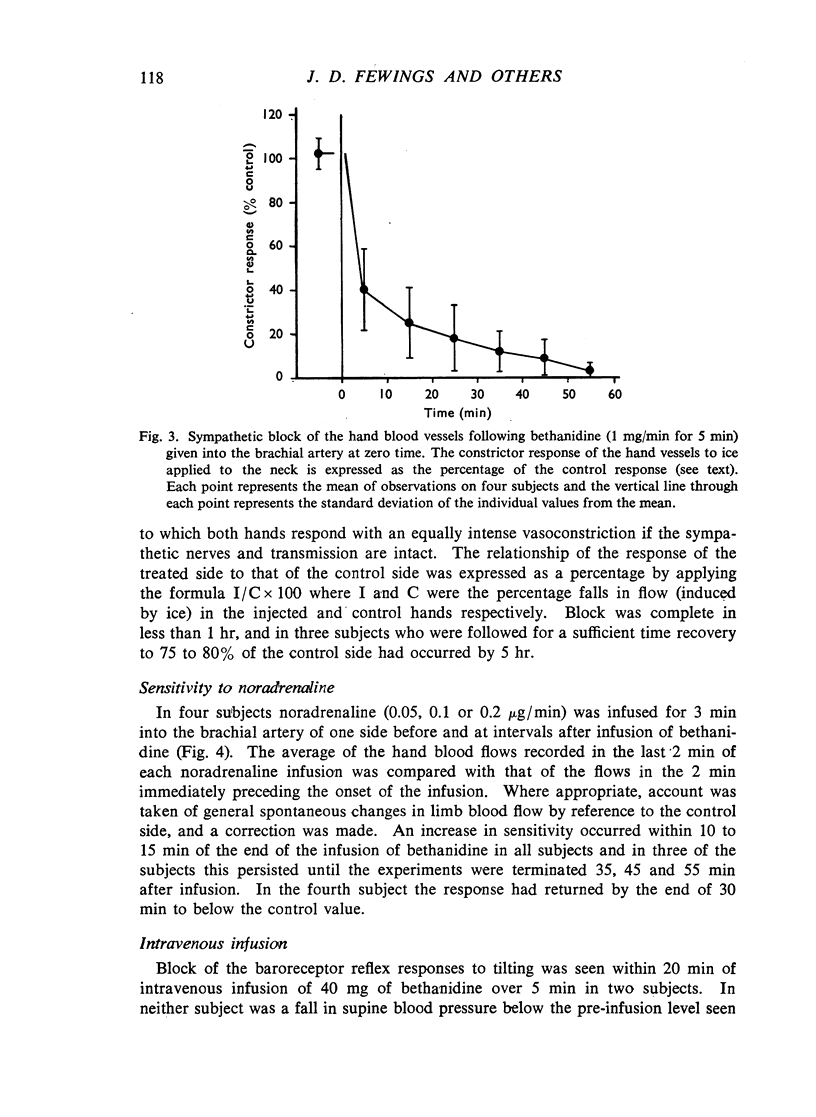
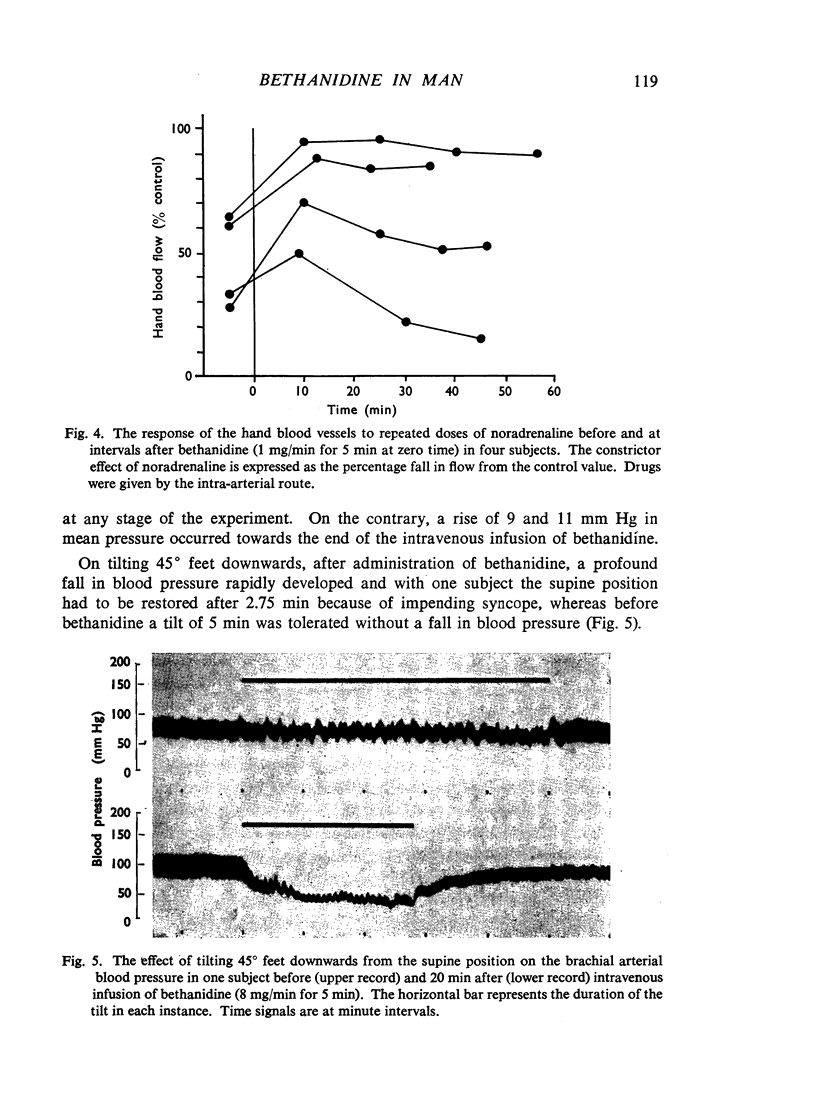
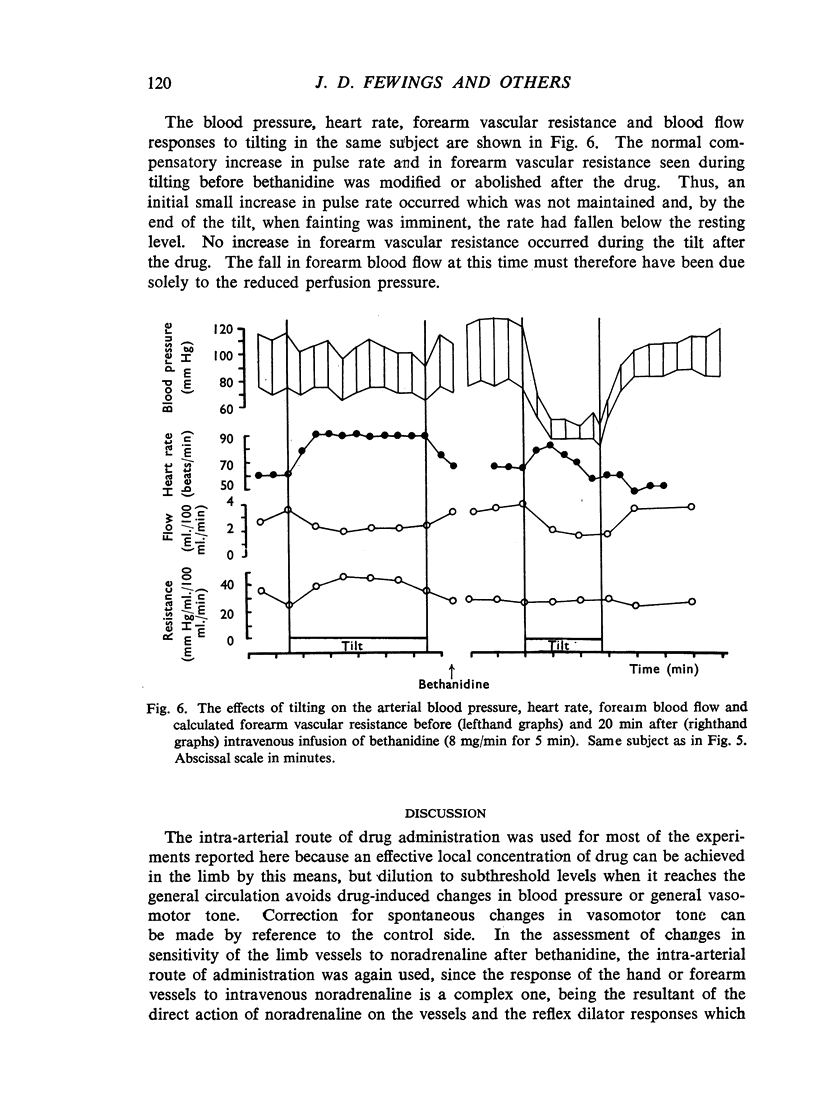
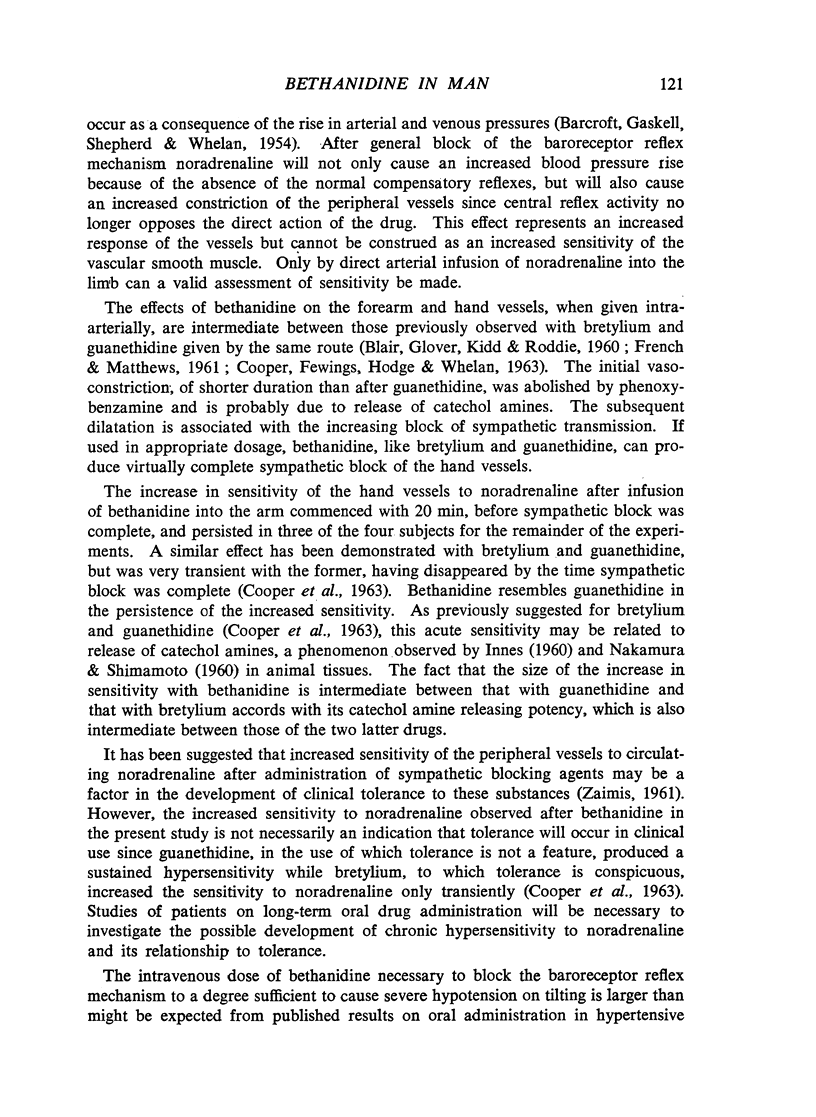
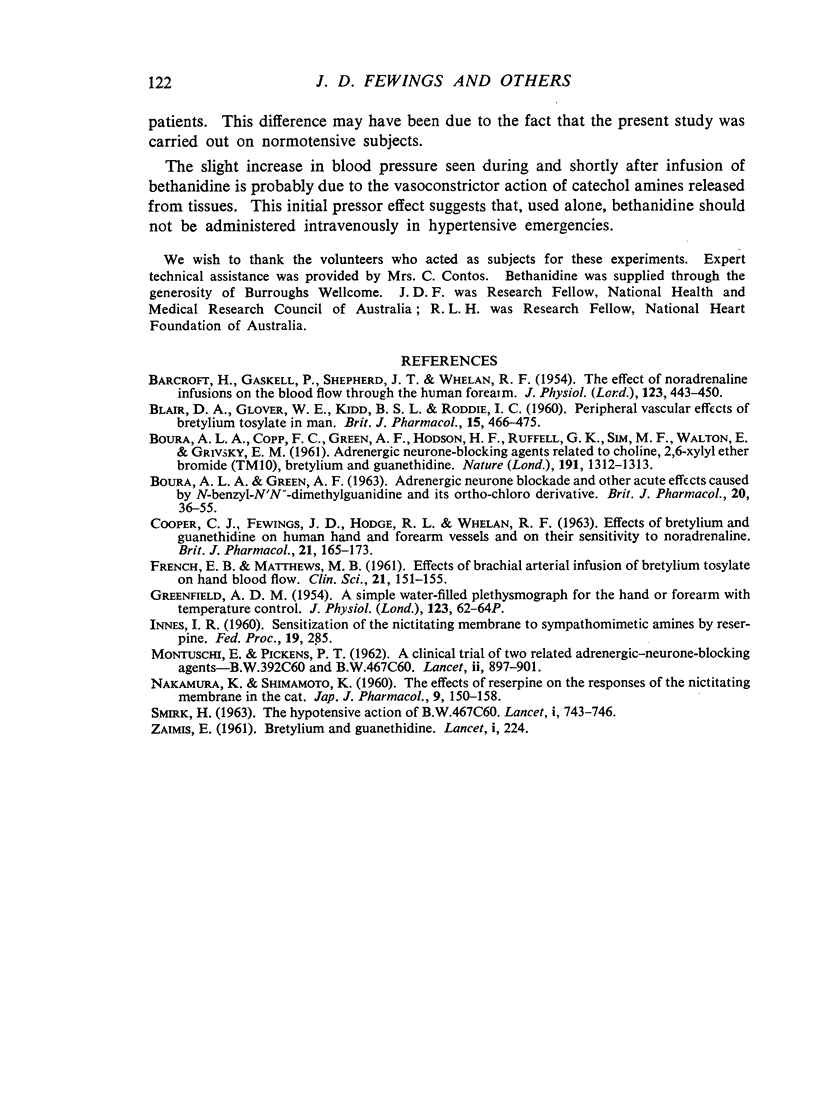
Images in this article
Selected References
These references are in PubMed. This may not be the complete list of references from this article.
- BARCROFT H., GASKELL P., SHEPHERD J. T., WHELAN R. F. The effect of noradrenaline infusions on the blood flow through the human forearm. J Physiol. 1954 Mar 29;123(3):443–450. doi: 10.1113/jphysiol.1954.sp005063. [DOI] [PMC free article] [PubMed] [Google Scholar]
- BOURA A. L., COPP F. C., GREEN A. F., HODSON H. F., RUFFELL G. K., SIM M. F., WALTON E., GRIVSKY E. M. Adrenergic neurone-blocking agents related to choline 2, 6-xylyl ether bromide (TM 10), bretylium and guanethidine. Nature. 1961 Sep 23;191:1312–1313. doi: 10.1038/1911312a0. [DOI] [PubMed] [Google Scholar]
- BOURA A. L., GREEN A. F. Adrenergic neurone blockade and other acute effects caused by N-benzyl-N'N"-dimethylguanidine and its ortho-chloro derivative. Br J Pharmacol Chemother. 1963 Feb;20:36–55. doi: 10.1111/j.1476-5381.1963.tb01295.x. [DOI] [PMC free article] [PubMed] [Google Scholar]
- COOPER C. J., FEWINGS J. D., HODGE R. L., WHELAN R. F. EFFECTS OF BRETYLIUM AND GUANETHIDINE ON HUMAN HAND AND FOREARM VESSELS AND ON THEIR SENSITIVITY TO NORADRENALINE. Br J Pharmacol Chemother. 1963 Aug;21:165–173. doi: 10.1111/j.1476-5381.1963.tb01512.x. [DOI] [PMC free article] [PubMed] [Google Scholar]
- FRENCH E. B., MATTHEWS M. B. Effects of brachial arterial infusion of bretylium tosylate on hand blood flow. Clin Sci. 1961 Oct;21:151–155. [PubMed] [Google Scholar]
- GREENFIELD A. D. A simple water filled plethysmograph for the hand or forearm with temperature control. J Physiol. 1954 Mar 29;123(3):62P–64P. [PubMed] [Google Scholar]
- NAKAMURA K., SHIMAMOTO K. The effects of reserpine on the responses of the nictitating membrane in the cat. Jpn J Pharmacol. 1960 Mar;9:150–158. doi: 10.1254/jjp.9.150. [DOI] [PubMed] [Google Scholar]
- SMIRK H. The hypotensive action of B.W. 467C60. Lancet. 1963 Apr 6;1(7284):743–746. doi: 10.1016/s0140-6736(63)91565-4. [DOI] [PubMed] [Google Scholar]



